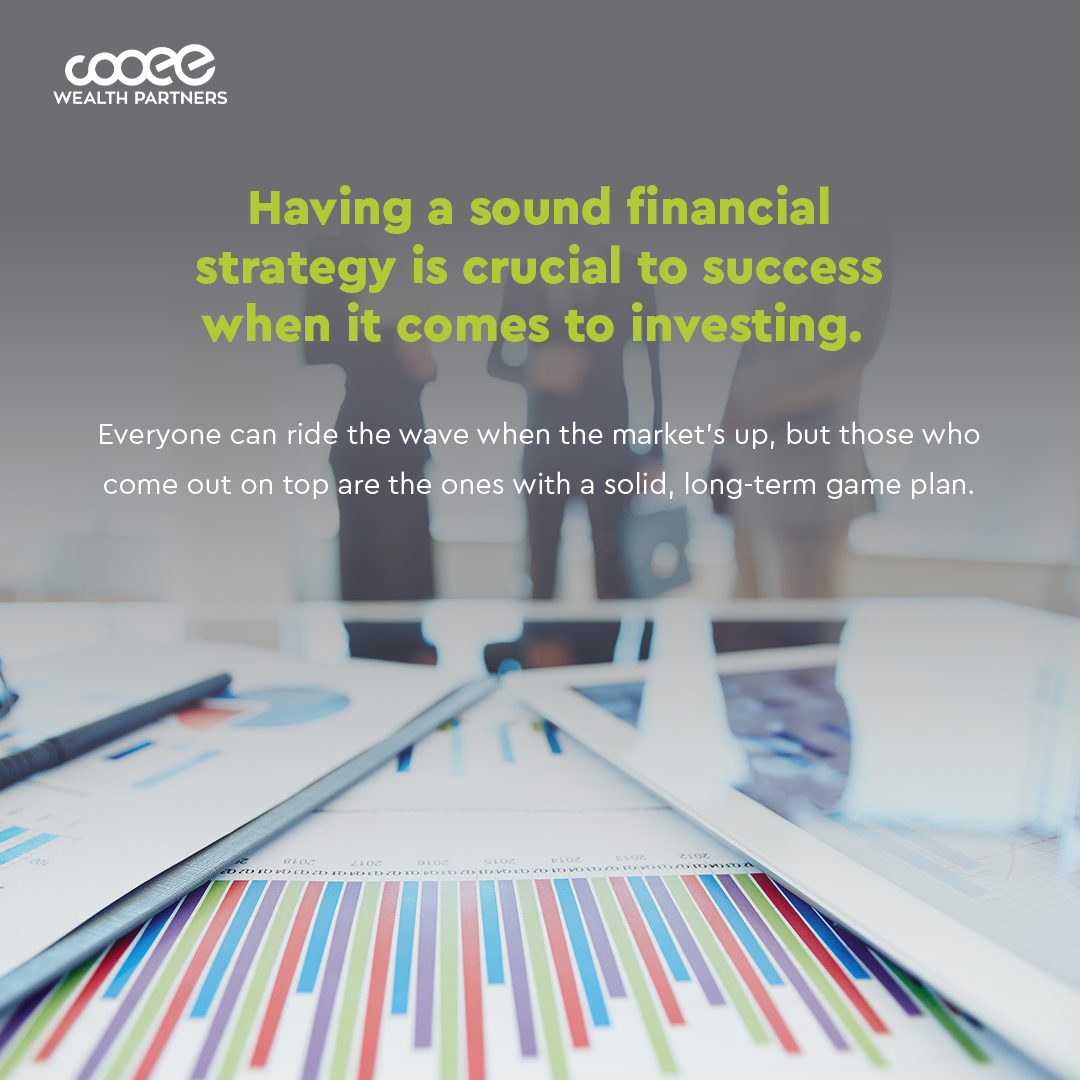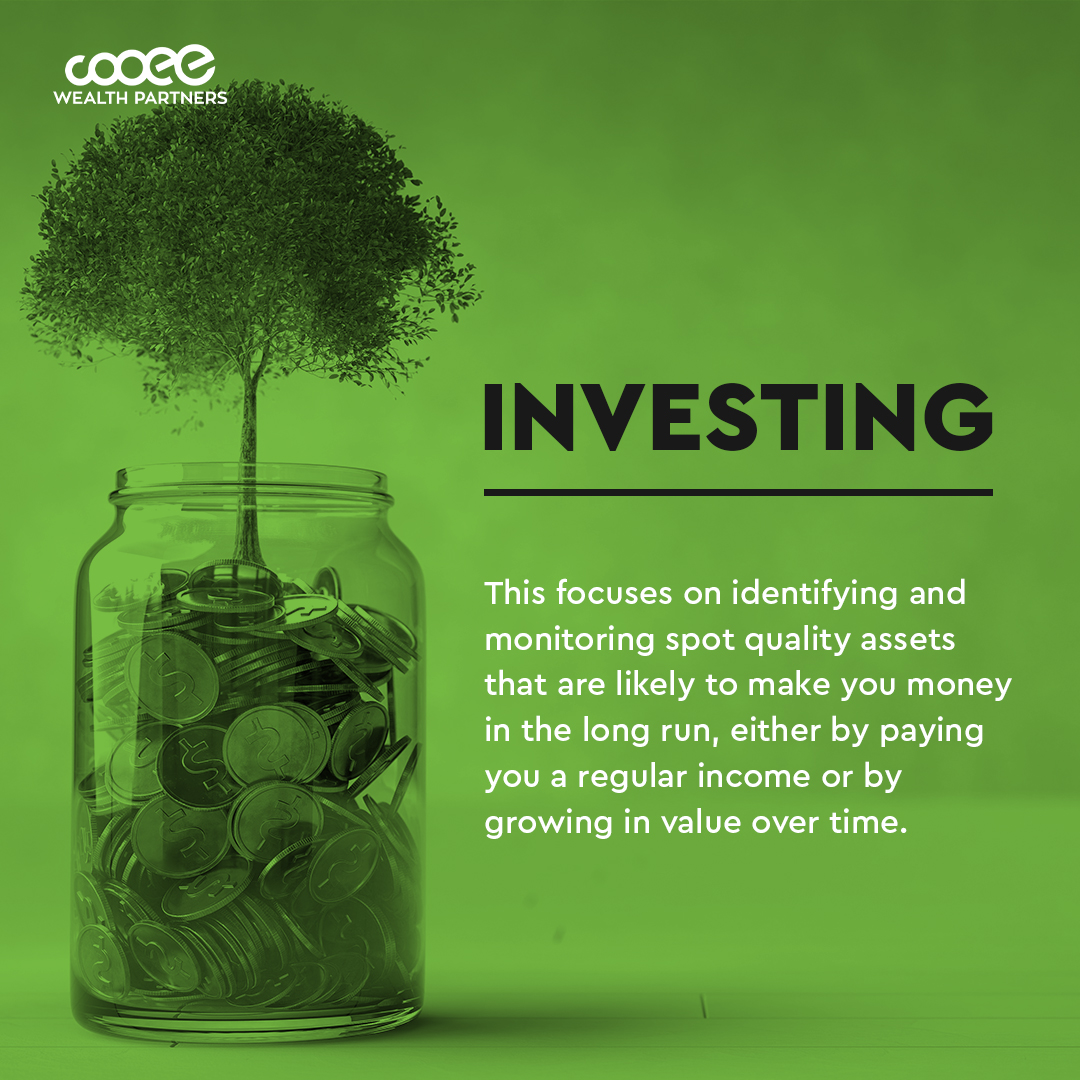
We’ve all been brought up thinking that hiding away our funds is the ultimate gateway to financial freedom. But let’s shatter that illusion right now. The truth is, while saving is a cornerstone, the genuine jackpot lies in the art of smart investments.
Sure, raking in profits in the financial market feels fantastic. But that’s just a chapter in the story, and it doesn’t guarantee a happily ever after. Let’s not forget that success isn’t just about doing the right things — it’s also about avoiding the wrong ones.
There are some basic rules to follow for success when it comes to investing, and having a sound financial strategy is up there. Everyone can ride the wave when the market’s up, but those who come out on top are the ones with a sturdy, long-term game plan.
Don’t sweat it if you’re not a finance guru from the start — nobody is. It’s about learning, taking baby steps, and seeking out solid (expert) advice. With a strategy and the right guidance, you’re well on your way to hitting those financial milestones.
And remember, you don’t have to figure this all out on your own. Here is where Cooee Wealth Partners comes in.
Spot the difference in the market: Trading, speculating and investing
There are three common ways that people try to build their wealth by attempting to make a profit in the market. Here’s a rundown on how they are different from each other, and which one is viable for long-term financial growth and success (spoiler: it’s investing).
1. Trading
When it comes to the world of finance, there are two main approaches: investing and trading. Both are geared toward snagging profits in the market, but they follow different rhythms.
Investors, for example, are the marathon runners. Their game plan is all about the long haul, seeking substantial returns over time. They get in the game by purchasing assets like stocks and bonds and then patiently hold onto them. Think of it as planting seeds and watching them sprout into something substantial.
On the flip side, traders are the sprinters. They thrive on quick moves. Their strategy involves swift entries and exits from the market, aiming to pocket smaller but more frequent gains. They like to ride the waves of market fluctuations to catch those short-term wins.
Whether you’re more comfortable with the steady pace of investing or the adrenaline rush of trading, the financial landscape is brimming with possibilities. Some people find contentment in annual progress, while others chase after monthly triumphs.
2. Speculating
Think of speculating as stepping into a riskier zone. It’s akin to casino betting, where people put money into ventures that might not pan out well – a high-stakes gamble of sorts.
The true contrast between speculating and investing lies in the risk factor. Speculators are like thrill-seekers, hunting for monumental wins or losses. They place hefty bets, aiming for a big score, but they’re also exposed to substantial setbacks.
Investors take on a more calculated approach to risk. They’re after moderate returns and meticulously select their moves to avoid extreme outcomes. The tolerance they have for risk is the defining factor that distinguishes investing from speculating.
3. Investing
Investing is all about being a smart detective. You spot quality assets that are likely to make you money in the long run, either by paying you a regular income or by growing in value over time. The ups and downs of these assets in the short term might be a bit mysterious, but as time goes on, you and your Wealth Partner can figure out their real worth.
Investing relies on something called fundamental analysis. It’s like digging deep into the inner workings of a company or asset to figure out its true value. On the other hand, trading and speculating use technical analysis, which is a bit like studying patterns in short-term moves.
Investing might sound like the go-to option among the three, but it’s a smart move to get a Wealth Partner on board before you take the leap. At Cooee Wealth Partners, we will help you craft a solid plan that matches your goals and dreams.
Common mistakes an investor can make
Before you dive into the investment world, ask yourself why you’re doing it. Your investments should be reliable allies on your path to financial achievement. However, be cautious: chasing quick wins or trendy stocks might not be the key to enduring wealth.
Here’s the rundown on some common slip-ups that new investors make:
- Not setting clear goals:
Investing without clear objectives is like driving without a destination. Instead, set precise goals: align your plan, strategies and portfolio with your ambitions. Dodge transient trends and focus on a portfolio that propels you toward lasting dreams.
- Putting all eggs in one basket:
Think of investing like a buffet – diverse options beat a single dish. Variety cushions against market volatility so spread the risk by diversifying your investments.
- Getting stuck in short-term thinking:
Expecting a tree to turn into a forest overnight? Just as unrealistic as expecting instant investment gains. Prioritise the bigger picture. Long-term thinking combats impulsive decisions prompted by fleeting market noise.
- Finding the right risk balance:
Taking too much risk might give you heart palpitations while playing it too safe could lead to missed opportunities. It’s all about understanding your comfort level and finding that sweet spot.
- Choosing the right guide:
A Wealth Partner is like having a knowledgeable friend who helps you navigate the investing terrain. They’ll help you design a portfolio that matches your risk appetite and financial goals. Keep in mind that no one can predict the future, so be realistic about your expectations.
How to build a strong investment portfolio

Investing is about seeing the bigger picture, not just individual pieces, where each part contributes to a beautiful whole. To create a robust investment portfolio, each piece of the proverbial puzzle should align with your goals.
Your investment journey might involve various accounts – tools in your toolbox. A high-yield savings account and company shares, for instance. As you expand your goals, like saving for a home, more accounts join the party.
As we mentioned above the key here is not to crowd all your eggs into one basket. Diversification is key. Therefore, you need to prepare wisely.
- Set goals and risk tolerance:
Just as embarking on a journey without a destination leads to chaos, investing without direction can be confusing. Outline where you want to go and your willingness to take risks. These answers shape your investment approach.
- Know the basics:
Investing operates under rules, much like a game. Understand the dynamics of the stock market and the principles of valuation. While risks are present, strategic planning and thorough research can help you navigate them successfully. And if you’re seeking guidance, think of your Wealth Partner as your dedicated coach.
- Diversify investments:
Just as friends with the same hobbies can become dull, placing all your funds in one place carries risks. Diversification is akin to embracing various interests; it smooths out fluctuations and reduces risk. Intelligent portfolios blend assets, industries, and regions to create a balanced investment strategy.

Investment metrics you should monitor
Here’s a key factor that can impact your investment journey – staying engaged with your investments and keeping an eye on the right indicators.
When you stay in the loop about how your portfolio companies are doing, keep track of important metrics and milestones, and make changes when necessary, you’re setting yourself up for a better shot at success. This way, you can make sure your investments are heading in the right direction.
Here are a few metrics to follow:
- Compound Annual Growth Rate (CAGR):
This one’s a biggie — your investment’s yearly report card. Compound Annual Growth Rate (CAGR) gauges annual growth, factoring in dividends and gains. It’s more than just numbers, it shows your strategy’s performance over time.
- Benchmark comparison:
Picture this as a reality check. A benchmark measures how well your investments fare against others. If your investment is the star athlete constantly beating the benchmark, you’re doing a victory lap. But if you’re trailing behind, it might be time to hit the training ground and figure out how to catch up.
- Sharpe ratio:
The Sharpe ratio is your very own risk-adjusted report card. This metric calculates risk, sizes it up against potential gains and gives you the lowdown.
- Beta:
Welcome to market volatility metre, where Beta gauges your investments’ moves in line with the market. It’s basically like taking every stock in the market and combining it into one and calculating its volatility. A beta of 1 means your investment’s got the same zest as the entire market, a beta of 0.5 is the mild version, and a 2 beta is like having some extra spice.
You don’t have to navigate these metrics solo. Cooee Wealth Partners will help you understand these metrics and how they play into your goals.
In the world of finance, investing isn’t a one-size-fits-all approach. It’s not about just jumping in and hoping for the best – it’s about being on the ball. While saving is vital, the real game-changer is the art of smart investments. It’s easy to get caught up in the allure of financial success, but success isn’t solely about the right moves; it’s also about avoiding the wrong ones, and to get there, you need the right guide at your side.
Book a meeting with one of our Wealth Partners, we will make sure that your investment portfolio will help you achieve your financial goals.





